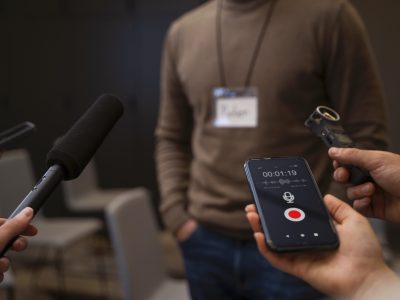Introduction
The Asset Management Company (AMC) industry, vital for managing and growing wealth, has undergone significant changes in recent years. As financial markets grow increasingly complex, so do the challenges faced by AMCs. One such challenge is “front-ending,” a practice that can severely impact the integrity and performance of investment portfolios. In this context, Chief Risk Officers (CROs) play a crucial role in identifying early warning indicators (EWIs) to mitigate risks associated with front-ending. This article delves into the nature of front-ending in the AMC industry and how CROs can develop effective EWIs to protect their organizations.
Understanding Front-Ending
Front-ending occurs when fund managers or entities with advanced knowledge of upcoming trades buy or sell securities ahead of large orders from mutual funds or other institutional investors. This practice can manipulate market prices to the detriment of investors. It can take several forms, such as trading ahead of client orders, front-running large trades, or using inside information for personal gain. Front-ending undermines market integrity and can result in substantial financial losses for investors.
The Impact of Front-Ending
Front-ending can have significant repercussions for AMCs, including:
1. Erosion of Trust: Investors rely on AMCs to act in their best interest. Front-ending, if discovered, can lead to a loss of trust, potentially driving clients away.
2. Regulatory Consequences: Regulatory bodies around the world are cracking down on market manipulation practices. AMCs found guilty of front-ending face hefty fines, legal actions, and reputational damage.
3. Financial Losses: Front-ending can distort market prices, leading to suboptimal trading outcomes for AMCs and their clients. It can result in financial losses that are difficult to quantify but are invariably detrimental to portfolio performance.
The Role of Chief Risk Officers
CROs are pivotal in safeguarding AMCs from the risks associated with front-ending. Their responsibilities include identifying potential threats, developing risk management strategies, and ensuring compliance with regulatory standards. To effectively combat front-ending, CROs must adopt a proactive approach, employing a combination of technology, data analytics, and a deep understanding of market dynamics.
Developing Early Warning Indicators (EWIs)
Early Warning Indicators are tools that help CROs identify potential risks before they materialize. For front-ending, EWIs can be designed to detect unusual trading patterns, suspicious transactions, and other signs of market manipulation. Here’s how CROs can develop effective EWIs for front-ending:
1. Leverage Advanced Analytics
Modern technology provides CROs with powerful tools for analyzing trading data. Machine learning algorithms and artificial intelligence (AI) can detect patterns and anomalies that may indicate front ending. By analyzing large datasets, these tools can identify trends that human analysts might miss.
Example: An EWI could be designed to flag trades that consistently occur just before large orders from institutional clients. If such patterns are detected, the CRO can investigate further to determine if front-ending is occurring.
2. Monitor Trading Activity
Regular monitoring of trading activity is essential for detecting front-ending. CROs should implement systems that track transactions in real-time, looking for signs of market manipulation. This includes unusual spikes in trading volume, changes in order execution times, and price movements that do not align with market trends.
Example: A sudden increase in the trading volume of a particular security, followed by a large institutional order, could be an indicator of front-ending. The CRO can use this data to investigate the trades and identify any suspicious activity.
3. Enhance Surveillance Systems
CROs should enhance their surveillance systems to capture a broader range of data points. This includes not only trading data but also communication logs, social media activity, and news reports. By integrating these sources, CROs can gain a comprehensive view of market behavior and identify potential front-ending activities.
Example: Surveillance systems that cross-reference trading activity with communication logs can identify instances where traders may have used non-public information to place trades ahead of large orders.
4. Develop Behavioral Models
Behavioral models can help CROs understand the typical trading patterns of fund managers and other market participants. By establishing a baseline for normal behavior, deviations from this baseline can be flagged as potential risks. These models can be refined over time to improve their accuracy and effectiveness.
Example: If a fund manager who typically makes small trades suddenly starts executing large trades just before institutional orders, this deviation from their usual behavior could indicate front ending.
5. Collaborate with Regulators
CROs should work closely with regulatory bodies to stay updated on the latest front-ending schemes and best practices for detection. Collaboration with regulators can also provide access to additional data sources and analytical tools that can enhance EWI development.
Example: Regular meetings with regulatory bodies can help CROs understand emerging trends in front-ending and incorporate new detection techniques into their EWI systems.
6. Implement a Whistleblower Program
Encouraging employees to report suspicious activities can provide valuable insights into front-ending. A whistleblower program can be an effective tool for uncovering front-ending schemes that might not be detected through traditional surveillance methods.
Example: An anonymous reporting system where employees can share concerns about potential front-ending activities can help CROs identify issues that may not be apparent from data analysis alone.
7. Foster a Culture of Compliance
Creating a culture of compliance within the organization is critical for preventing front-ending. CROs should promote ethical behavior, provide regular training on market manipulation risks, and ensure that all employees understand the consequences of engaging in front-ending.
Example: Regular training sessions on the ethical standards expected of employees and the legal ramifications of front-ending can reinforce the importance of compliance.
Case Study: Front-Ending Detection at a Leading AMC
Consider the case of a leading AMC that implemented a comprehensive EWI system to combat front-ending. The AMC used advanced analytics and real-time monitoring to track trading activity. By integrating AI tools, they developed behavioral models that flagged deviations from typical trading patterns.
In one instance, the system detected a series of trades that consistently occurred just before large institutional orders. Upon investigation, it was discovered that an employee was using insider information to trade ahead of client orders. The AMC’s proactive approach allowed them to address the issue promptly, minimizing financial losses and maintaining client trust.
Front-ending poses a significant risk to the integrity and performance of AMCs. CROs play a vital role in mitigating these risks by developing effective EWIs. By leveraging advanced analytics, monitoring trading activity, enhancing surveillance systems, developing behavioral models, collaborating with regulators, implementing whistleblower programs, and fostering a culture of compliance, CROs can effectively detect and prevent front-ending.
As the financial landscape continues to evolve, so must the strategies employed by CROs to safeguard their organizations. By staying vigilant and proactive, CROs can ensure that their AMCs remain resilient against the challenges posed by front-ending and other market manipulation practices.















